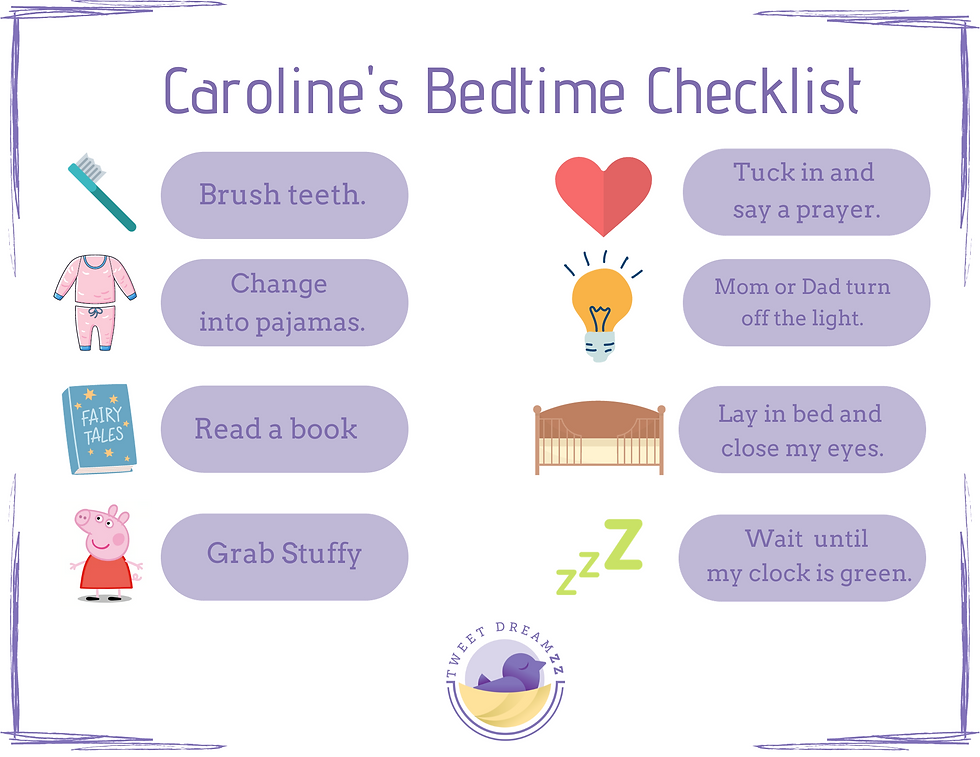A Stress-Free Guide to Switching Your Twins from Cribs to Toddler Beds
- Lindsay Loring
- Jan 20, 2024
- 5 min read
Updated: Feb 24, 2025
Transitioning twins from cribs to toddler beds can be a daunting task, especially when it comes to maintaining a peaceful bedtime routine. You may worry about a potential sleep regression during this period. However, with careful planning and effective communication, you can make this transition a positive experience for both you and your twins. In this blog post, we'll explore a step-by-step guide to switching your twins from cribs to toddler beds while sharing a room.
When is the right time to move your twins to toddler beds?
One key factor in ensuring a successful transition is choosing the right time. Waiting until your twins are around 3 years old provides them with more developed impulse control and a better understanding of the changes happening around them.
Other factors that are out of your control may play a role in moving them earlier:
Climbing out of the crib.
Needing the crib for a new baby.
Making the move too soon because you were trying to improve sleep.
To elaborate more on the three items listed above, pump the breaks. If your child is trying to climb out, put them in a sleep sack or turn the crib around so the highest side faces out. If you have a new baby, keep the newborn in a bassinet or pack n play for a while before moving them to a crib. This will give your older twin more time in the crib. Moving to an open bed does not improve sleep. Small children do well with a physical boundary, and when that is taken away, they may regress further.
When the time is right to move your twins to toddler beds, here are some tips!
Involve your children in the process by communicating with them about the upcoming transition. This could look like holding a family meeting and even role playing to show your twins how they lay in the beds and what happens if they get up!
Allow them to participate in choosing new bedding and helping with the crib-to-bed transformation.
Remove almost everything from the room. Yes, you read that right! You will want to have a safe and non-stimulating place to sleep. Anchor the furniture, remove all toys except a few small stuffed animals and books. Clean out the closet and remove anything they can get into like lotions or creams. Using outlet protectors and cord covers can also be a good idea.
Install a camera that can pan the entire room to ensure their safety. We recommend this one. *As an Amazon Associate I earn from qualifying purchases.
Have a Plan for When They Leave the Room
It's common for children, especially twins, to explore their newfound freedom by leaving their room after the transition. This is not an if they leave the room, it’s when. Having a plan in place is crucial. Consider a strategy of silently returning them to bed if they wander. Walking them back repeatedly without providing attention to the behavior helps establish boundaries. You will want to walk them back as many times as it takes for them to stay. If tucking them in becomes a stalling tactic, walk them back to the door and leave again. Repeating key phrases can be helpful, as well. It could be something as simple as ‘night night’ or something more complex. If you are using a toddler color clock, incorporating the color into the phrase can be helpful.
Some children experience a honeymoon phase initially but may regress later. Being consistent with a silent return can be an effective method in such cases.
Useful Tools to Use When Transitioning Your Twins to Toddler Beds
The use of tools and visuals can be integral to your twin’s success in their new beds! These are not ‘magic’ tools, but they can supplement your new boundaries in a positive way. Revisit the rules each night and keep these two items in the forefront when communicating bedtime rules. “Red means bed” “What does the chart say? Let’s double check”.
Toddler Clock: The Hatch Rest clock is one of our favorites at Tweet Dreamzz. *As an Amazon Associate I earn from qualifying purchases.
When coaching families of toddlers and preschoolers in beds, we always incorporate this tool in our plans. A color clock can significantly enhance the new routine as a visual boundary for your twins. The clock isn’t the secret, but your adherence to the color is. If the color is red, it’s time for bed, if it’s green, it’s time to get up. Children often respond well to visuals, and these tools can provide a visual structure to bedtime. If your twins have a hard time waiting in the morning, start small by having them wait a few minutes. Once they have successfully waited, make sure to applaud their success.
The Hatch Rest clock, with its customizable features, can help establish a consistent sleep-wake cycle.
Bedtime Chart: A bedtime rules chart can outline expectations, making it easier for your twins to understand and follow the routine. Essentially, this is a visual guide for your twins to see the process from start to finish. Get your own Tweet Dreamzz Bedtime Chart here!
Print it out and hang one for each in their room and at eye level.
Ignoring behaviors, yet highlighting positive behaviors
If your twins are still napping, they may have a longer sleep onset. Between the ages of 3-4, your twins are likely still napping some days out of the week. This is perfectly normal and age appropriate. On days that your twins nap, moving bedtime later (8-8:30) can be helpful to reduce sleep onset and attention seeking behaviors. Ignoring behaviors can be helpful in the long run. This doesn’t mean you will ignore if there is a safety concern, but it does mean you should give the new setup’s novelty some time to wear off. If your twins are giggling, hugging, or getting into each other’s beds- ignore. It’s very normal for them to explore the new space and ‘see what may get your attention’. Best advice here is to allow the newness to take place and then they will begin to settle much quicker when they realize it doesn’t get your attention. Be sure to bring attention to the behaviors you want them to repeat- 'wow, buddy, mommy loved seeing you cuddle your stuffed animals'
Things to Remember When Transitioning Your Twins to Beds
The move from cribs to beds with your twins doesn't have to be a stressful experience. By waiting until your twins are around 3 years old, involving them in the process, having a plan for room departures, and incorporating helpful tools like the Hatch Rest clock and bedtime rules chart, you can create a smooth and predictable bedtime routine that allows your twins to continue to be good sleepers. Remember, communication and consistency are key to ensuring a positive transition for both you and your twins. If you would like personalized support through this experience, don’t hesitate to reach out to a Tweet Dreamzz Sleep Consultant. We are experienced twin moms and sleep coaches who will walk you through a successful transition!
Lindsay Loring is a twin mom and senior sleep consultant at Tweet Dreamzz Sleep Consulting. She has coached over 150 sets of twins on the journey to predictable sleep for the entire family. Find out what options she has for your twins today! https://www.tweetdreamzz.com/twin-sleep-plans








Comments